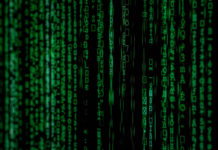Connecting to the internet at the speed of light!
Well, sort of. Imagine an office where every computer, mobile phone and tablet is connected to the internet not through an ethernet connection or via wi-fi but just through the overhead lights.
According to Professor Harald Haas, this is the future using what is called LiFi.
Professor Haas has been working on this at Edinburgh University in Scotland for some years, and is now running a company called Pure LiFi to try and commercialise the technology. The university itself has invested in a LiFi R&D Centre to try to kick-start an industry which might turn Edinburgh into a world centre for this technology.
The technology will be on display at the Mobile World Congress in Barcelona.
In a demonstration two laptops are set up on a table, one with a conventional connection to the internet, linked to a piece of kit which is in turn connected to a conventional light fitting. The other computer has a bulky unit attached to it, effectively a light receiver. It’s by making the light flicker very rapidly that data is conveyed from one computer to the other. It’s a bit like Morse code but in a very sophisticated way, achieving very high data rates.
And lo and behold, it works, with the second laptop streaming a video which buffers and halts if the light is blocked off completely.
But, if ‘conventional’ wi-fi works so well, do we need an alternative means of connecting to the internet? The reason is very simple; there are so many access points now deployed that they interfere with each other and slow down the actual data rates. Something different is needed.
There are security benefits – light-generated internet connections do not travel through walls, so cannot be intercepted like a wi-fi signal.
All in all a new and exciting approach to transmitting data that we can expect to see being developed and rolled out in the not too distant future.









